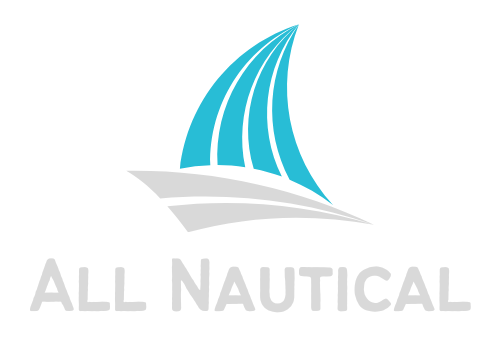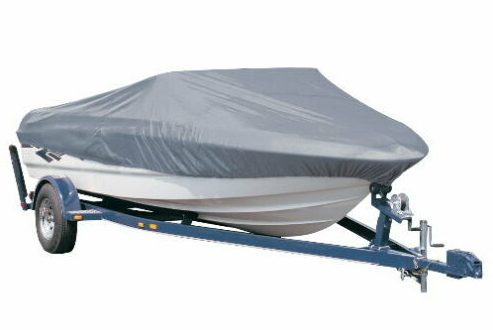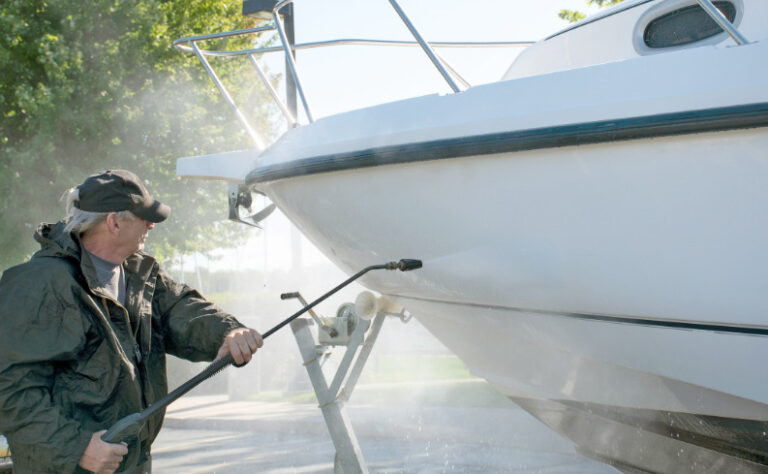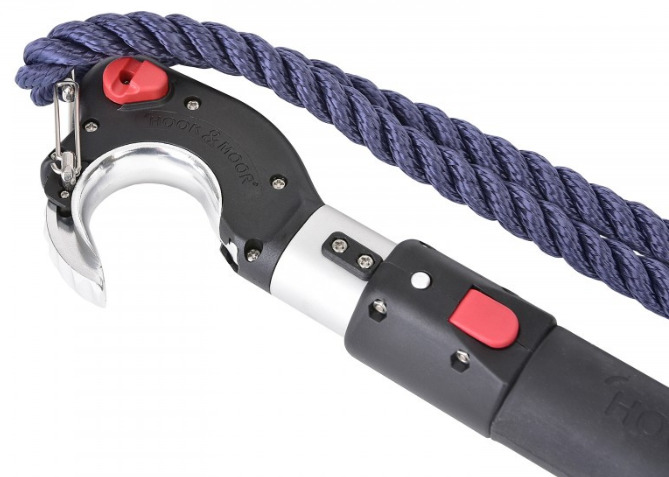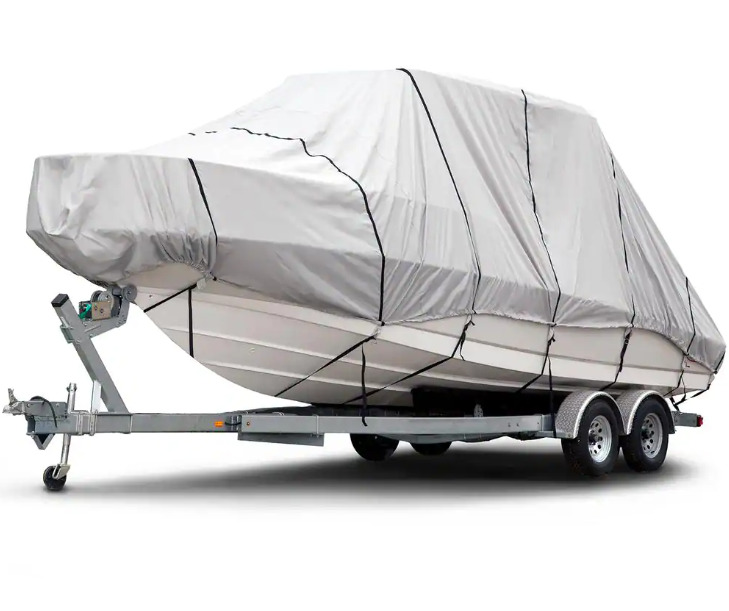Last Updated on October 5, 2022 by Brian Drew
It isn’t a rule that your boat should always return to the dock after you are done boating. There are times you will want to secure your boat for fishing or have lunch or even spend the night in your boat.
Sometimes even your engine might stop working. So how do you keep your watercraft in one place and avoid it from drifting or crashing into nearby rocks? Simply by anchoring it!
Anchoring is a skill you should learn even before you learn to sail. Even though it sounds as if it’s not too hard to grasp, it definitely is not as simple as throwing an anchor into the water.
Inefficient securing can cause the dragging of your anchor and cause your vessel to run aground. Here we explain the basics of anchoring and some tips to follow for successful anchoring.
What do you need for anchoring?
The anchor
Anchors are heavy gear that is designed to dig into the sea bed. In fact, it is not just its weight of it that causes it to dig but the shape and nature of the sea bed. Below are the different types of anchors and the various sea bed content.
Types of Anchors
- Fisherman – Have tiny flukes that work well on rock and weed
- Danforth/Fluke – Lightweight and ideal for sand and mud
- Claw – Hold well than other types and is best suited for sand
- Plough anchors – They have a plow shape and are good for use in grassy seabeds
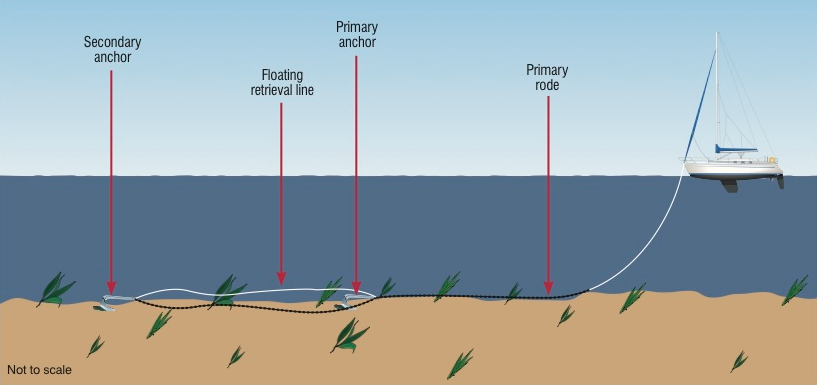
The sea bed location could be made of
- Mud
- Sand
- Rock
- Weed
- Coral
- Clay
- Grass
The size of your anchor is very important. Though having a large one may work well for securing your boat it will unnecessarily eat into your storage space.
Rode
A road is a connection between the anchor and the boat. It can either be made of Nylon rope, chain, or a combination of both.
- Chain – Galvanized steel is the preferred metal for chains. In the case of a chain rode, it is either stowed on a windlass or even just stored on the deck like a rope.
Windlasses are available in most modern boats and are a safer way to store and deploy chains. The great thing about chains is that you don’t have to worry about chafing or your rode wasting away easily. Also, the weight of the chain gives you the most of your rode length in calm weather.
- Nylon rope– These are lighter and are especially suitable for smaller boats to reduce the weight onboard. Unlike chains, they can stretch and so help to reduce the effect of waves and water currents. But the downside is that they can easily be damaged by chafing against mud, sand, coral, and rock.
Scope
The scope is the length of the rode that goes between the vessel and the anchor. If your scope is too short then it will cause drag. The amount that you will need can be calculated using a few facts. You need to know the following.
- The depth of the water
- The distance between the water and the bow roller
Add the above two numbers and five times that number should be the length of your rode. In windy situations, you can multiply by 7 or 8 to increase the scope.
Steps to anchoring
The series of steps involved in successfully anchoring your vessel is explained below.
- Choose the location for anchorage
- Bring the vessel to a complete stop
- Slowly lower the anchor from the bow roller or gently drop it from the side if it is stowed on the deck
- Once it reaches the bottom back of the boat a little without using too much force so as to disturb the setting
- Next use the bow cleat to pull the line or use the windlass for a chain rode
- Tie the line or secure the chain using a snub line
- Now turn on the engine and back down against the line
- If your vessel does not move, then it means you are successful
- If you feel your watercraft moving, then you will have to repeat the process until it is secure
Anchoring tips
When you are new to anchoring it is rather easy to get excited and make mistakes. In fact, even after successfully doing so a few times, mistakes can happen if you don’t pay attention. Here are some tips that you might find useful
- Always choose the right kind of anchor
- In case of a nylon rope rode, always have at least 3 to 6 feet of galvanized chain attached to the anchor. This will prevent the chafing caused by materials such as sand, mud, and rocks
- In case of a chain rode, attach a nylon line where the chain ends. This will help to cushion the action of waves and wind due to the stretch offered by the nylon
- Choose a spot that is free from too much wind, boat traffic, or water current, use easy climb boat ladder if possible
- Use the bow cleat to tie the line
- Ensure that the vessel’s bow is against the direction of the wind or the water current
- Once you have decided the location, the engine should be in neutral
- Start to lower only after the boat has come to a complete stop and there is no forward motion
- Avoid throwing your anchor into the water, but carefully and gradually lower it
- Once you have let out the required amount of line, begin the setting process by using the idle reverse option in your boat
- Always have reference points to ensure that your boat is not drifting
- Never anchor by the stern as small boats can capsize owing to the weight in the stern where the engine and fuel tank are
Anchoring Rules
There are some anchoring rules or etiquette one should follow especially when there are other boats in the vicinity. You can call them the dos and don’ts of anchoring. Here are the most basic ones to help you get started.
- The first boat in the anchorage decides the etiquette
- The use of anchorage is on a first come first serve basis and other boats which come in later need to take into account swing radii and other attributes
- Always enter the anchorage area at a slow speed and do not disturb others who have moored their rides
- Never anchor too close to another boat or vessel
- If the anchorage is too crowded, use a buoy to mark your location and avoid tangling lines
- If you are anchoring next to a moored vessel ensure there is plenty of space in between as moored vessels do not swing like anchored vessels
- Do not anchor upwind of an anchored vessel as cooking odors can become a problem
- It is rude to shine a spotlight on an anchored boat
- Do not speak over the sound of the engine or play loud music
- Other sounds to avoid are the constant ringing of phones, dogs barking, and generator sounds
- Use hand signals or walkie-talkies for communicating between the bow and the cockpit during anchoring
- Do not use generators either too early in the morning or too late into the night
- Use a holding tank to throw your garbage or food scraps as it can be extremely bothersome to swimmers
- Follow USCG mandate rules such as avoiding restricted zones, marked channels, and using appropriate night lights
